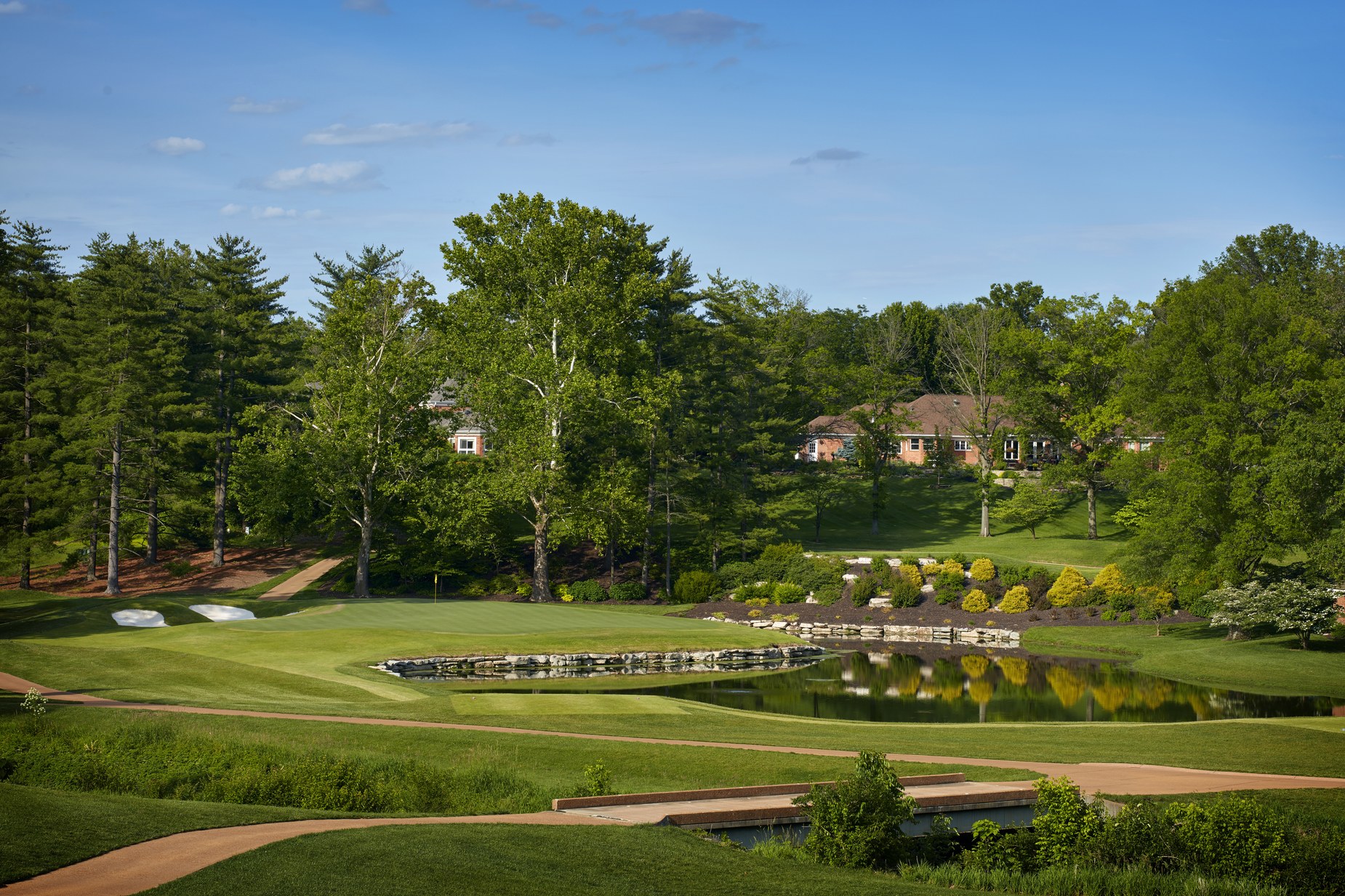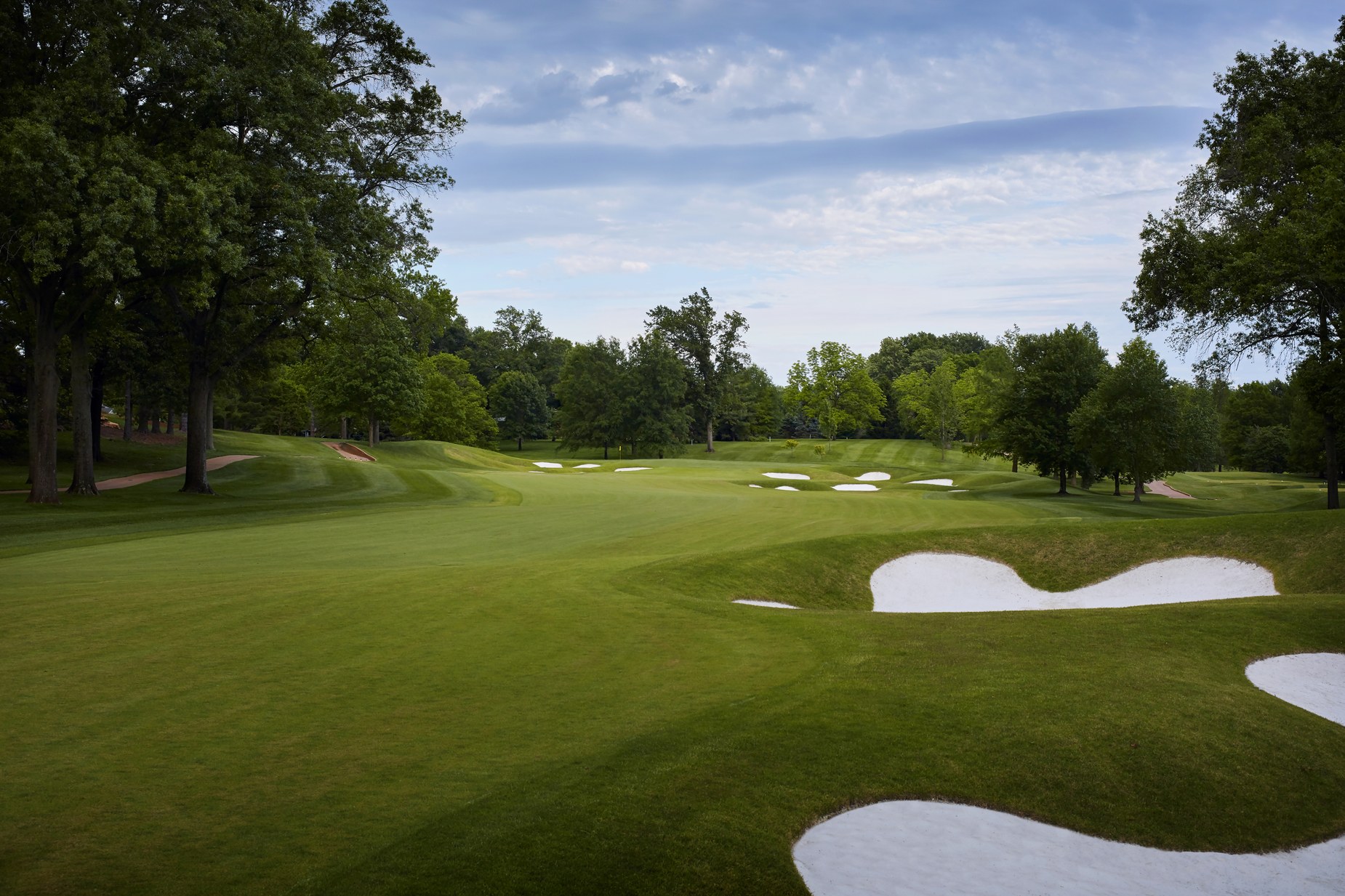It will be a historic week next week outside St. Louis. Bellerive Country Club, which opened in 1897 as The Field Club, will host its second PGA Championship in the 100th playing of the event. Though it lacks the long list of major championship history of venues like Oak Hill or Baltusrol, Bellerive is worthy of recognition. Gary Player won the 1965 U.S. Open there and the course also hosted the inaugural U.S. Mid-Amateur in 1981 as well as the 2004 U.S. Senior Open and the 2013 Senior PGA.
Robert Trent Jones Sr. designed the existing course in 1960. Bellerive ranked inside our 100 Greatest from our first set of rankings in 1966 through 2003, ranking as high as our Second 10 in 1969. Jones’ son, Rees Jones, has done recent work at Bellerive, restoring some of his father’s design elements and modernising other aspects. Bellerive Country Club is currently the top-ranked course in its state, and it ranks 118th on our Second 100 Greatest ranking (jumping 27 spots in our most ranking from 145th).

The first hole at Bellerive is no easy opener. You need to find the fairway to score well on this 425 yarder, well guarded by fairway bunkers—a theme throughout this Trent jones design.

Gary Kellner
Right away, you can see the refined bunker edges that Jones’ team has worked on recently.

Gary Kellner
The view from the first green looks back up at the clubhouse.

The second hole was redesigned from a sharp dogleg left, with its green not visible off the tee, to a wide open look at the green—though still retaining the architectural elements of the previous hole.

The large lake at the front of the green used to be a creek, but Rees Jones changed the hole significantly in his 2006 restoration.

Another terrific view behind a green, this looking back down No. 2 fairway.

The first one-shotter at Bellerive is short, playing just 147 yards for the PGA Championship.

The tee at the fourth hole, which plays as a par 5 for member play. It will play a sizable 520 yards or so for the PGA Championship.


Looking down at the green from the fourth fairway.

The fifth tee.

The 213-yard par-3 sixth hole at Bellerive played at a 4.03 stroke average at the 1965 U.S. Open. This long, diagonal green is protected by a number of swales—making precision paramount. Though it looks like a skinny green from the tee, it’s visually deceptive: You could have a 75-foot putt on this green.

The seventh hole is a short two-shotter, which will likely play less than 400 yards—making this a true birdie opportunity for the field.


The seventh green.

The eighth is a slight dogleg left par 5, which will play around 610 yards for the PGA Championship.

Perhaps the toughest par 4 on the outward nine at Bellerive is the ninth. The uphill approach shot to a green with different levels is an intimidating number to hit. If you’re any bit offline, par is a tough score.

The 10th hole is a dogleg left that runs downhill once you’re past the fairway bunker on the left.


The view behind the 10th green.

Rees Jones made some modifications at No. 11, including the option to make this a drivable par 4, which is likely to happen over a couple rounds. Jones made the kick slope left of the green short grass as a target for those going for the green from the tee, yet wanting to stay away from the water on the right. Balls might bounce off it and onto the green, but more likely, balls will settle in that tightly mown hollow, making for a tricky pitch and run off a tight lie.

A view looking down the 12th fairway.

The visually intimidating fairway bunkers at No. 12.

The 13th hole is a par 3 that plays over a creek to a slightly elevated green. This green has been rebuilt far more often than any in the course. The ridges and undulations make this a difficult green to navigate.

The risk-reward 17th hole, which will play around 600 yards for the PGA Championship.

Rees filled in a pond that was short right of the green, replacing it with bunkers. The stream along the right does come close to the right edge of the green, so there’s still some risk for those attempting to reach this par 5 in two.

The 18th hole is the most heavily bunkered fairway, and green, on the course— befitting a closing Robert Trent Jones hole.

The 18th fairway.
—Additional commentary provided by Golf Digest’s Senior Architecture Editor Ron Whitten.








